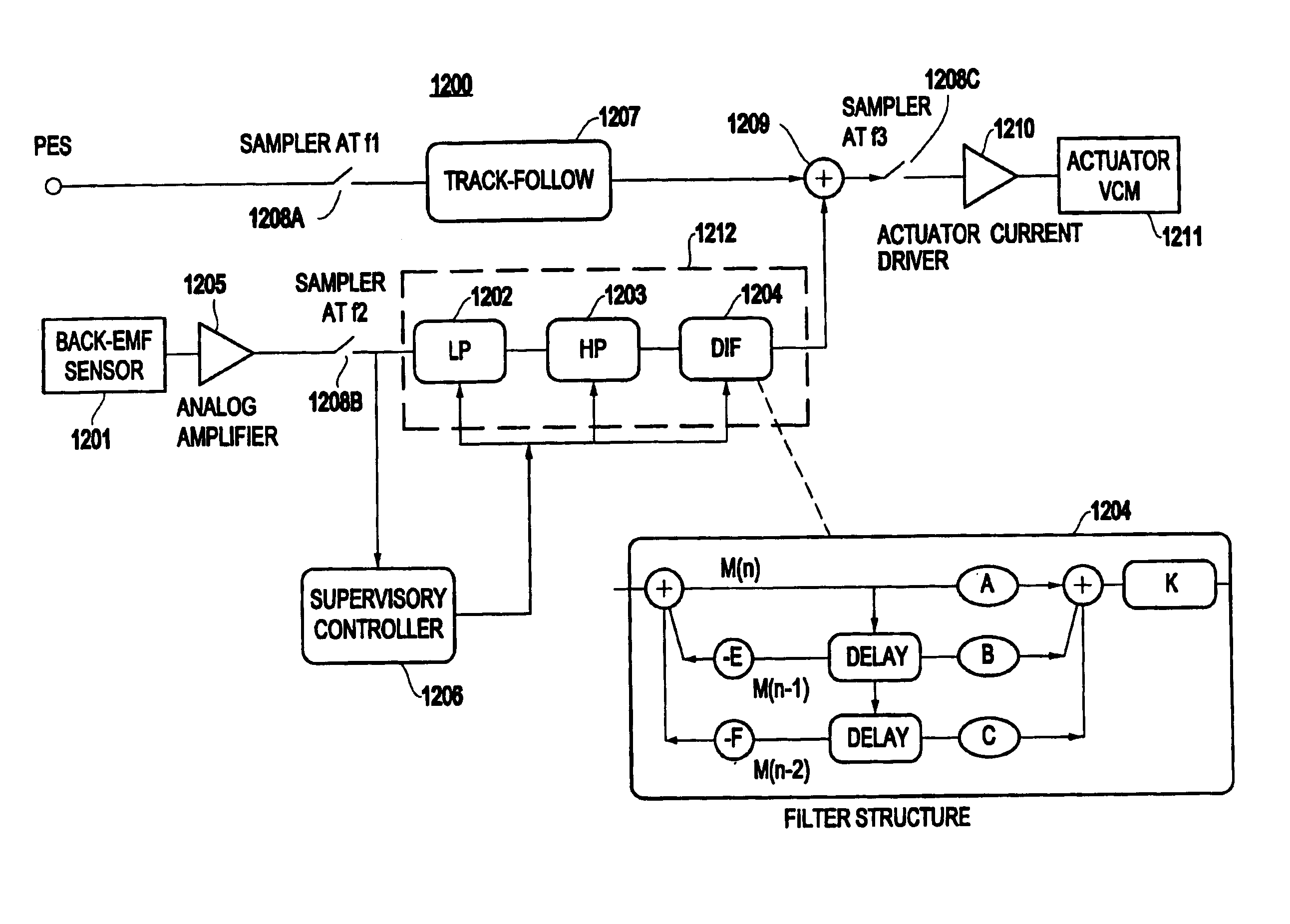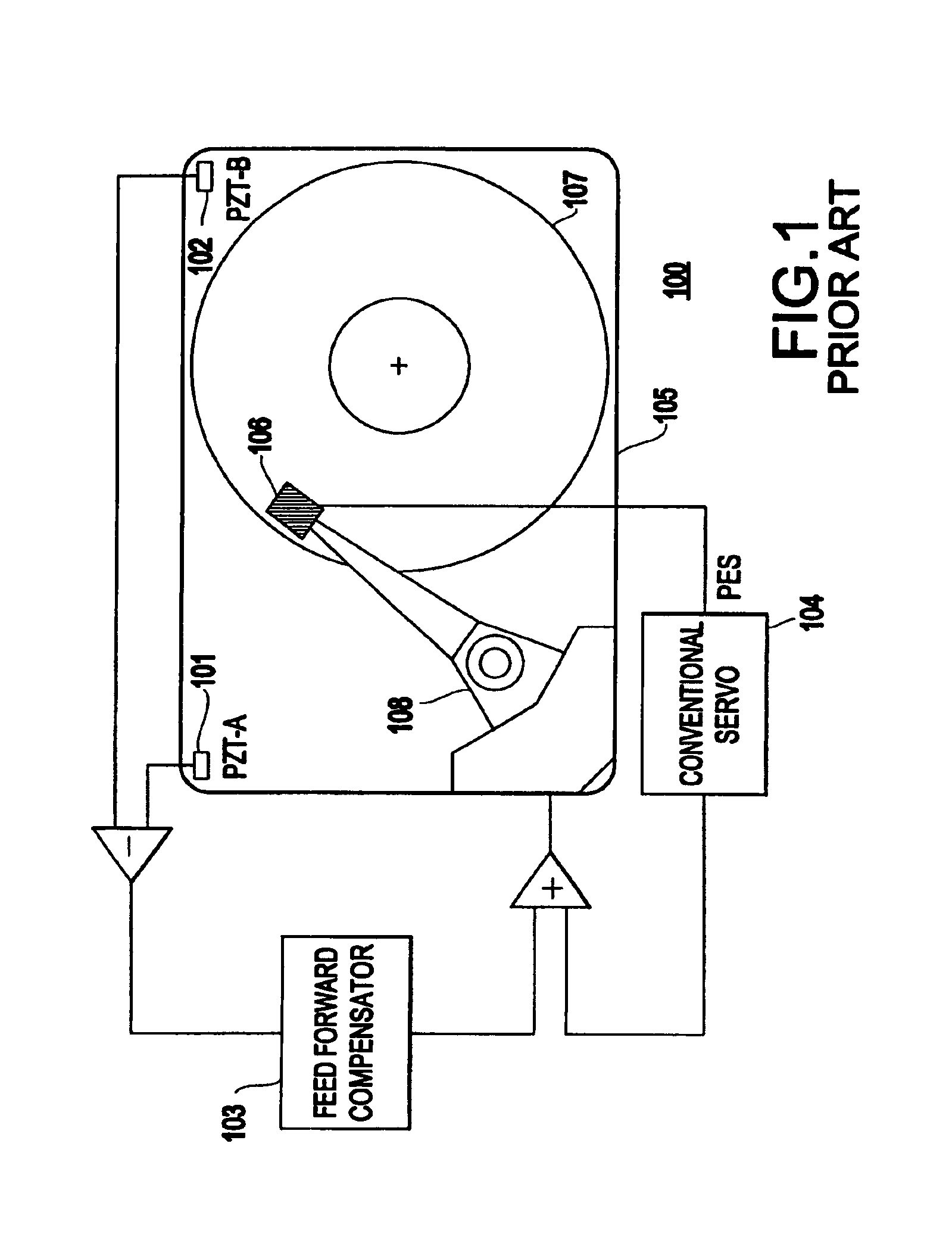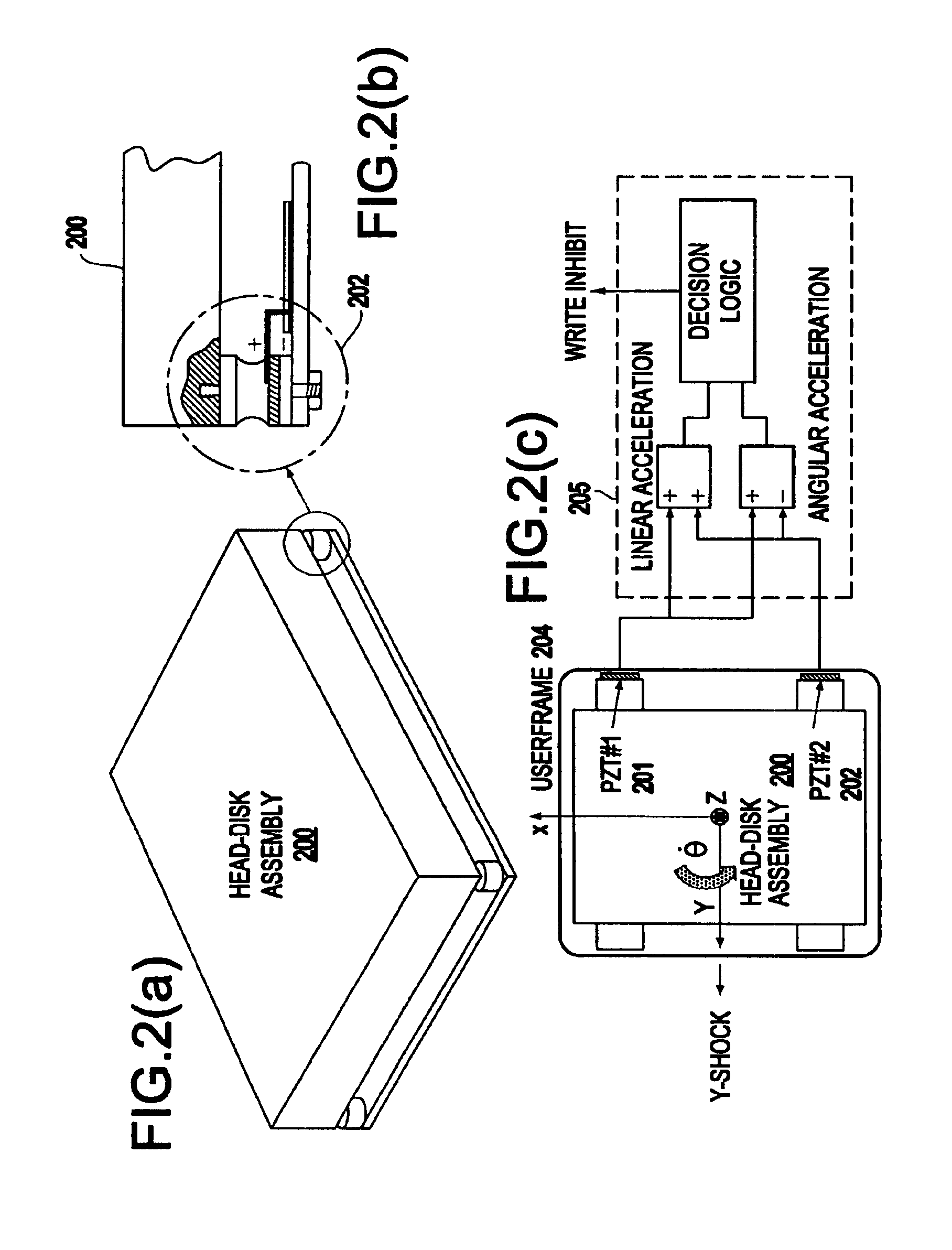Method and system for rotational velocity-based algorithm for vibration compensation in disk drives
a technology of rotational velocity and disk drive, applied in the field of disk drives, can solve the problems of high criticality of the vibration-induced track following error component, the computer system itself may be subject to external seismic excitation, and the head positioning accuracy in the disk drive is prone to both self-generated vibration and vibration, so as to reduce the tracking error substantially, less prone to undesirable vibration pick up, and less stringent
- Summary
- Abstract
- Description
- Claims
- Application Information
AI Technical Summary
Benefits of technology
Problems solved by technology
Method used
Image
Examples
embodiment
Preferred Embodiment
[0052]Turning to FIG. 3, an actuator of a disk drive generates a reaction torque during a seek. In computer configurations where there are multiple drives arranged in the form of an array, the multiple reactions produced by the drives generate a vibration spectrum.
[0053]The form and magnitude of a vibration (e.g., both linear and rotational) spectrum is system-specific, but it tends to be a band-limited power spectrum interspersed with a finite number of harmonics. The base-plate vibration, especially along X, Y and about Z (e.g., coordinate theta) can contribute to TMR.
[0054]As mentioned above, a major contribution to TMR comes from theta-dynamics. The actuator mass imbalance contributes to TMR through the torque disturbance produced by the linear vibration of the actuator pivot, but nominally the imbalance amount is negligible.
[0055]Compliance of the spindle motor bearing can also produce undesirable TMR due to X, Y vibration of its axis of rotation. The spindl...
PUM
| Property | Measurement | Unit |
|---|---|---|
| frequency | aaaaa | aaaaa |
| frequency | aaaaa | aaaaa |
| seek time | aaaaa | aaaaa |
Abstract
Description
Claims
Application Information
 Login to View More
Login to View More - R&D
- Intellectual Property
- Life Sciences
- Materials
- Tech Scout
- Unparalleled Data Quality
- Higher Quality Content
- 60% Fewer Hallucinations
Browse by: Latest US Patents, China's latest patents, Technical Efficacy Thesaurus, Application Domain, Technology Topic, Popular Technical Reports.
© 2025 PatSnap. All rights reserved.Legal|Privacy policy|Modern Slavery Act Transparency Statement|Sitemap|About US| Contact US: help@patsnap.com



